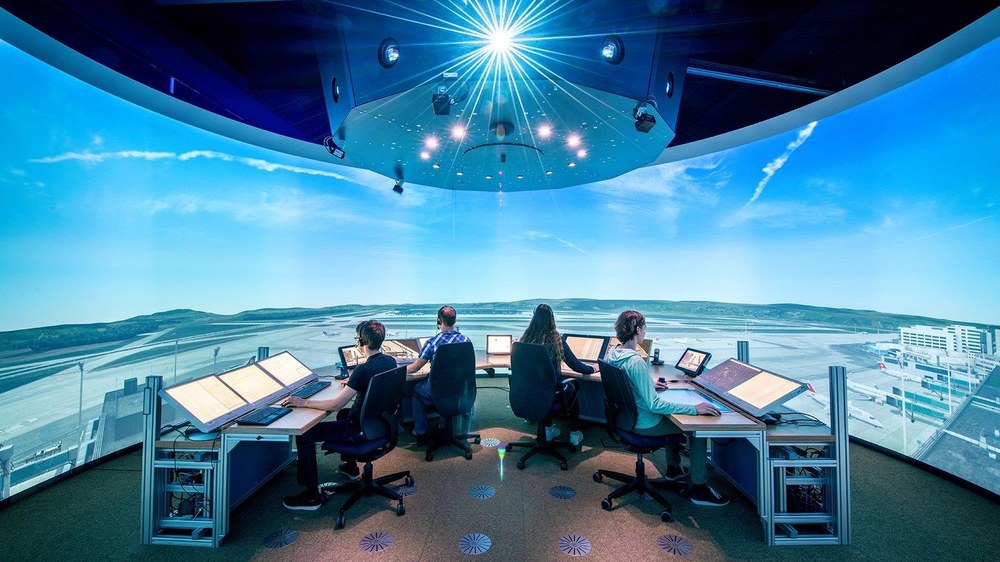Apron and Tower Simulator (ATS)

In the Apron and Tower Simulator (ATS) at the Institute of Flight Guidance, new air traffic control systems and procedures are validated at the airport and in the vicinity of the airport.
The airport is a highly complex environment for safe traffic management. Aircraft and vehicles manoeuvre on the ground in confined spaces. Take-offs and landings must be coordinated in such a way that there are no conflicts or separation infringements. Tower control authorises take-offs and landings and controls air traffic in the vicinity of the airport. Apron or ground control ensure safe traffic management on the ground. The ATS allows the associated workplaces to be modelled realistically and thus provides the basis for researching procedures and tools for air traffic control at the airport.
Simulation environment
The main feature of the ATS is a simulated 360° outside view. Thirteen projectors realistically depict the airport, traffic and weather conditions from the desired perspective. The air traffic controllers' workstations are modelled on the real ones. They can be quickly and easily adapted to the respective research project. Work equipment such as approach and ground radar or flight strip systems are made available and customised to the general conditions of the airport under consideration or the project requirements. There is radio contact with so-called simulation pilots, who control the aircraft in the next room using a radar display, mouse and keyboard in accordance with the instructions of the air traffic controllers.
Specialised simulation software forms the basis for the simulation environment. It calculates the aircraft movements according to the laws of physics, enables interaction with and between the work equipment and generates the external view. The ability to integrate external systems and programmes forms the basis for joint research projects and cooperation with national and international partners.
The ATS can be linked to all other simulators at the Institute of Flight Guidance. This enables complex, distributed simulations of several points in the air traffic system and the modelling of individual flights from take-off to landing.
Research areas
The basic structure of the ATS enables the integration of systems to be validated, such as assistance systems for collision warning, taxi guidance or approach sequencing. New or customised procedures can be tested. For example, changes to procedures following the introduction of new taxiways are validated and procedures for integrating future urban air mobility users into the airspace are analysed. As part of the DLR aviation strategy for climate-friendly air transport, suitable ground-based infrastructures and efficient operating processes for reducing emissions on the ground and in the vicinity of airports are being evaluated.
There are further customisation options on the software side. Almost any airport in the world can be displayed and any viewpoint can be selected. Simple inputs can be used to determine which aircraft will appear and which flight path it will take. The simulation of ground vehicles is also possible.
